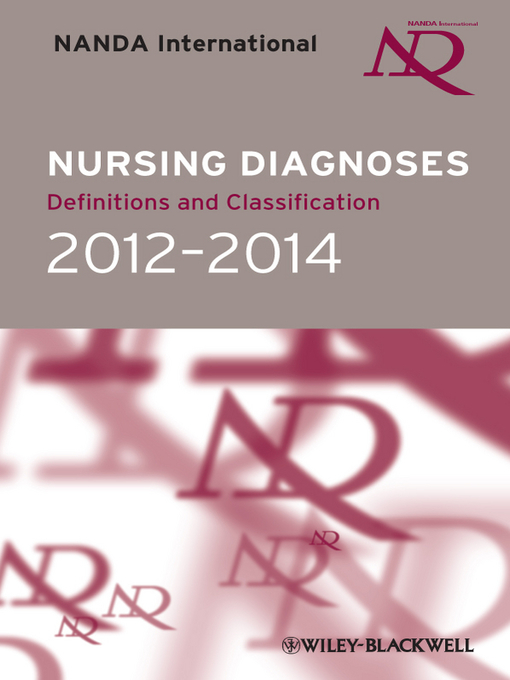A nursing diagnosis is defined as a clinical judgment about individual, family or community responses to actual or potential health problems or life processes which provide the basis for selection of nursing interventions to achieve outcomes for which the nurse has accountability (NANDA-I, 2009). Accurate and valid nursing diagnoses guide the selection of interventions that are likely to produce the desired treatment effects and determine nurse-sensitive outcomes.
Nursing diagnoses are seen as key to the future of evidence-based, professionally-led nursing care – and to more effectively meeting the need of patients. In an era of increasing electronic patient health records, standardized nursing terminologies such as NANDA-I, NIC and NOC provide a means of collecting nursing data that are systematically analysed within and across healthcare organizations and provide essential data for cost/benefit analysis and clinical audit.
Nursing Diagnoses: Definitions and Classification is the definitive guide to nursing diagnoses, as reviewed and approved by NANDA-I. Each nursing diagnosis undergoes a rigorous assessment process by NANDA-I's Diagnosis Development Committee, with stringent criteria used to indicate the strength of the underlying level of evidence.
Each diagnosis comprises a label or name for the diagnosis, a definition, defining characteristics, risk factors and/or related factors. Many diagnoses are further qualified by terms such as risk for, effective, ineffective, impaired, imbalanced, self-care deficit, readiness for, disturbed, decreased, etc.
The 2012-2014 edition is arranged by concept according to Taxonomy II domains, i.e. Health promotion, Nutrition, Elimination and exchange, Activity/Rest, Perception/Cognition, Self-perception, Role relationships, Sexuality, Coping/ Stress tolerance, Life principles, Safety/protection, Comfort, and Growth/development.
The 2012-2014 edition contains revised chapters on NANDA-I taxonomy, and slotting of diagnoses into NANDA & NNN taxonomies, diagnostic reasoning & conceptual clarity, and submission of new/revised diagnoses. New chapters are provided on the use of nursing diagnoses in education, clinical practice, electronic health records, nursing & health care administration, and research . A companion website hosts related resources.
Key features

